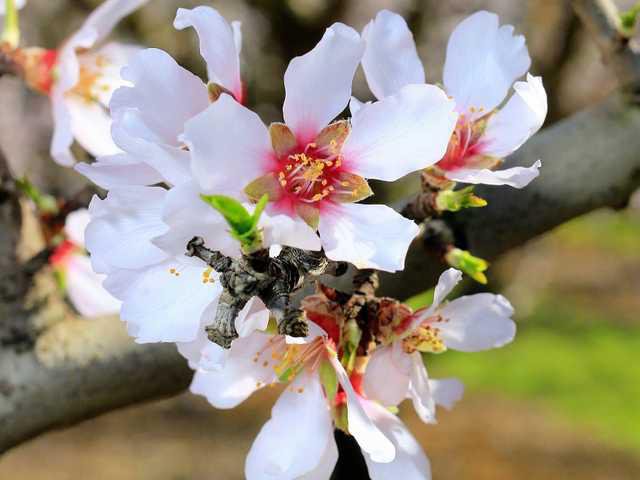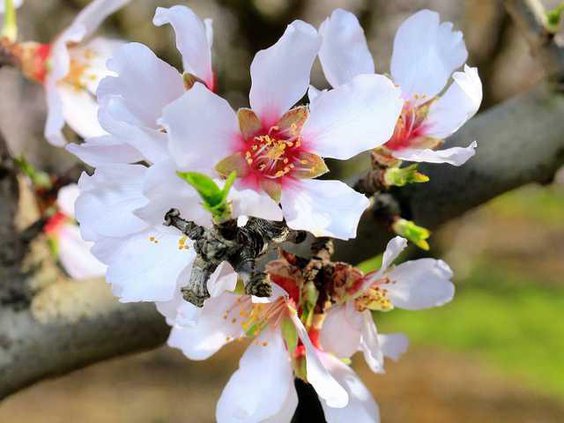With low temperatures dropping into the high 20s this week, South County almond farmers are going to be busy working overtime doing everything in their power to stave off the potential hard freeze that could damage the potential bumper crop of almonds that have already bloomed.
While for many it will be a wait-and-see approach, farmers who have the tools at their disposal will be doing something that may seem unconventional to try and keep the precious buds from being damaged – spraying water.
According to local almond farmer Dave Phippen, growers that have access to a deep water well, a pump and a sprinkler system will likely be spraying a certain amount of water to try and release the British Thermal Units, or BTUs, contained within that have the potential to raise the temperature a few degrees – or just enough to stave off the hard freeze long enough for the sun to come out.
Ultimately, Phippen said, it will come down to when the temperature drops below the 30-degree threshold – which starts to damage buds after 20 or 30 minutes.
“If that comes at around 4:30 or 5 a.m. we may get lucky and be able to make it through but it’ll be more difficult if it hits that temperature at 2 a.m.,” Phippen said. “So, we’re going to be watching it closely and doing what we can to prevent that from happening – most of us have frost alarms that will wake us up if the temperature gets that low.”
With an ample supply of water this past growing season, farmers reported a stronger than anticipated “bud set” that they believed would lead to higher yields at harvest, but the unseasonably warm temperatures earlier this month followed by the bitter cold expected through Wednesday could threaten that progress.
Phippen said that while the technology is older, there are still some fields around the South County that use a giant tower fan to pull warmer air from the inversion layer to thwart frost, and noted that it’s the older technology that still provides the opportunities for combatting frost – those on drip irrigation, he said, are likely at the mercy of the mercury since there isn’t much that a drip system can do to release the BTUs necessary to raise the temperature in an orchard.
In years past, it has been storms – like last year’s “atmospheric river” – that threatened the early bloom after pollination had already began in many parts of California.
Last month the Almond Board of California released a report showing that January shipments of Almonds rose 16.7 percent over 2017 numbers, which were already a record at 165.8 million pounds. The 193.5 million pounds that were packed and shipped across the globe led to commitment increases of 22.5 percent.
But the water-related issues that plagued growers during the drought may be returning. While reservoirs are currently at levels above historical averages, the Sierra Nevada snowpack – which holds one-third of the State’s water – is only at 24 percent of where it usually is at this point in the season.
To contact reporter Jason Campbell email jcampbell@mantecabulletin.com or call 209.249.3544.
CHILLY PROSPECTS
Freeze could damage almonds





